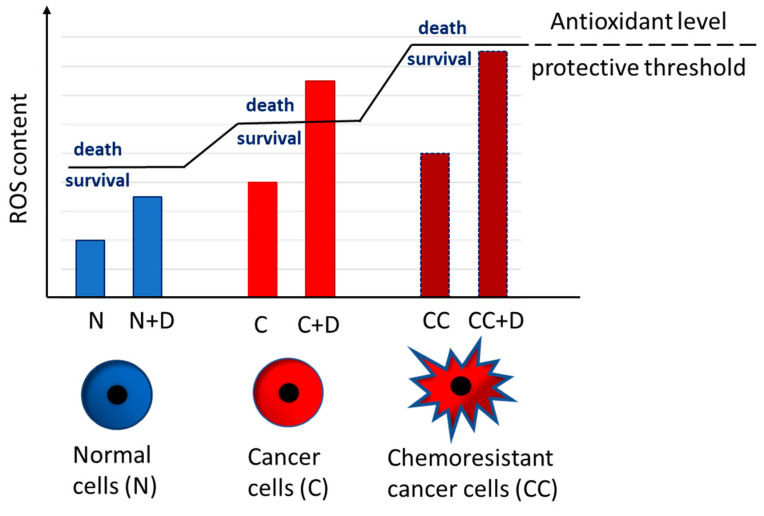Figure 2.
ROS levels and antioxidant threshold. Normal cells (N), cancer cells (C), and chemoresistant cancer cells (CC) can have different susceptibility to therapeutical approaches with drugs able to induce ROS production (drug, D). Low levels of ROS are required for cell survival, and medium levels are tolerated; however, overwhelming levels of ROS trigger cell death. N have low ROS, fully balanced by a robust antioxidant system. When ROS are increased by drug treatment, normal cells generally survive, being protected by antioxidants. Conversely, C have increased levels of basal ROS compared to normal cells. Moreover, C undergo a redox adaptation enhancing their antioxidant defenses; nevertheless, when ROS are increased by therapeutic approaches, they reach the death threshold earlier, and tumor cells can be killed more easily. In CC, ROS can be higher than in C; moreover, a consistent redox adaptation leading to an increased expression of antioxidants can be observed. In these conditions, ROS-inducing drug treatment may fail to kill cancer cells. The use of a combination of drugs that simultaneously induce new ROS generation and inhibit antioxidant defenses seems to be most promising.

